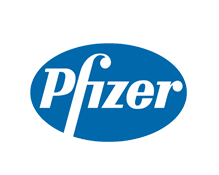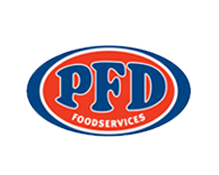Supervised Learning
Supervised learning:Supervised learning is a type of machine learning where the data is labeled with class labels that indicate which class a particular instance belongs to. The goal of supervised learning is to learn a model that can accurately predict the class label for new data instances based on their features.
A type of artificial intelligence known as supervised learning allows robots to learn from data and improve their accuracy in carrying out tasks without having to be explicitly programmed. It works by providing the machine with labeled input data, allowing it to recognize patterns and identify the desired output for each set of inputs. This process helps computers build up knowledge and experience, making them more efficient at completing complex tasks autonomously. Supervised Learning has numerous applications across various industries such as healthcare, finance, marketing, robotics, and many more. In this article, we will discuss how supervised learning works, its advantages over traditional methods of programming, and some of its real-world applications.
Supervised Learning is an algorithm used for teaching machines to learn through observation rather than explicit instructions. By leveraging large datasets that are labeled according to specified criteria or outcomes (i.e., "supervision"), these algorithms can understand patterns within the data and generate accurate predictions based on those patterns. Machines use supervised learning models to classify objects or make decisions about what actions should be taken given certain conditions or circumstances. The end result is improved accuracy compared to traditional methods of programming because machines no longer require human intervention after they have been trained on the data sets provided.
The potential power of supervised learning lies in its ability to automate decision-making processes which makes it highly appealing for businesses looking to optimize operations while reducing costs associated with manual labor involved in maintaining software solutions. From medical diagnosis systems that provide accurate results quickly to intelligent robots capable of navigating difficult terrain autonomously – the possibilities created by this technology seem almost limitless! In addition, recent advances in deep learning have enabled even greater precision when processing large amounts of data; leading experts believe this could revolutionize entire fields like computer vision and natural language understanding for years to come.
What Is Supervised Learning With Example?
Supervised learning is a machine learning algorithm in which the data provided is labeled and classified. It enables machines to predict outcomes based on real-world problems by using existing data sets for training. Supervised learning algorithms can be used to solve complex tasks such as image recognition, language translation, pattern recognition, and more.
An example of supervised learning would be K Means Clustering where clusters are identified within a dataset based on similarity or distance measurements between the points. This type of clustering can also help identify outliers that may not fit into any cluster. Additionally, it helps reduce bias variance so that models trained with this technique are robust and able to generalize better than other methods.
What Is Supervised Learning Explain?
Supervised learning is a type of machine learning that uses labeled data to draw conclusions about possible outcomes. This form of learning involves the use of algorithms, which are given input data and expected output labels in order to make predictions about unseen data sets. Supervised learning is used for classification tasks such as identifying objects from images or predicting stock prices, but can also be used for regression tasks such as estimating house prices in real-world problems.
The task of supervised learning includes categorizing data into different classes based on their characteristics. For example, DBLP (Digital Bibliography & Library Project) uses supervised learning to classify articles into different scientific disciplines by analyzing text features like keywords and authorship information. Similarly, CSBibliography (Computer Science Bibliography) applies supervised learning to classify computer science papers according to various topics within the field. Semi-supervised learning methods have been developed where training data consists only partially labeled instances; this approach has shown promising results when compared with traditional supervised techniques.
In summary, supervised learning is an important technique in machine learning, allowing us to efficiently identify patterns and correlations between input and output datasets using labeled examples. It can provide valuable insights and solutions for many complex real-world problems through its ability to learn from specific examples rather than relying solely on intuition or experience alone.
What Is Supervised And Unsupervised Learning?
Supervised and unsupervised learning are two of the main branches of machine learning. By utilizing sophisticated algorithms, these techniques can be used to solve real-world problems in a wide range of industries. Supervised learning focuses on classification and regression tasks, which involve predicting labels or values from data. Unsupervised learning deals with clustering tasks that attempt to group data points into meaningful categories based on their similarities.
Semi-supervised learning combines elements from both supervised and unsupervised approaches by allowing for unlabeled data sets as well as labeled ones. This type of technique is often used when manually labeling large datasets is impractical due to cost or time constraints. It has been applied in many areas including image recognition, natural language processing, speech recognition, recommender systems and customer segmentation according to DBLP CSBibliography.
Overall, supervised and unsupervised learning enable machines to make accurate predictions using large amounts of data while semi-supervised methods allow them to do so without requiring extensive human intervention. Together they form an important part of modern artificial intelligence research.
What Are The Types Of Supervised Learning?
Supervised learning is an area of machine learning that aims to create models from labeled data. It requires a dataset with the correct labels and allows machines to identify patterns in the data and make decisions or predictions based off of them. There are three main types of supervised learning: classification, regression, and clustering.
Classification is used when there is a discrete outcome for each input. For example, determining whether an image contains a cat or dog would be a classification problem. Regression problems involve predicting continuous outcomes such as stock prices or house values given certain inputs like size, location, etc. Finally, clustering algorithms group together similar objects into clusters without any predefined labels, allowing us to uncover hidden structures within our data. Each type of supervised learning algorithm has its own strengths and weaknesses which must be considered depending on the task at hand. Understanding these different types can help one better choose which approach will best suit their application's goals.
Conclusion
Supervised learning is a powerful tool used in artificial intelligence and data science. It enables computers to make decisions based on patterns found in the training data. This type of machine learning algorithm can be applied to various tasks, from image recognition to natural language processing. Supervised learning algorithms are trained using labeled datasets that contain input features along with their expected output labels. The supervised learning model is then evaluated on unseen test data and its performance is measured against the known labels.
Unsupervised learning, by contrast, does not use labels or predefined outputs for its training sets. Instead, it relies on finding patterns within the dataset without any prior knowledge about what these patterns mean or how they might influence the outcome of a decision making process. Unsupervised methods have been successfully used in areas such as clustering and dimensionality reduction, where no pre-defined labels exist but useful information can still be extracted from the available data.
In summary, both supervised and unsupervised learning techniques can be used effectively when working with complex datasets where there may not be clearly defined labels or outcomes associated with them. While each approach has its own set of advantages and disadvantages depending on the task at hand, understanding the fundamentals of each technique allows practitioners to develop more effective models and better understand their results.
PREVIOUS NARROW AI GLOSSARY TERM
Structural pattern recognition
NEXT NARROW AI GLOSSARY TERM
Supervised Learning Definition
Exact match keyword: Supervised Learning N-Gram Classification: Supervised Machine Learning, Supervised Deep Learning, Machine Learning Supervision Substring Matches: Supervised, Learning Long-tail variations: "Supervised Machine Learning", "Supervised Deep Learning", "Machine Learning Supervision" Category: Technology, Artificial Intelligence Search Intent: Research, Solutions, Purchase Keyword Associations: Unsupervised Learning, Neural Networks, Reinforcement learning Semantic Relevance: Machine learning, Artificial intelligence, Data Science Parent Category: Technology Subcategories : Unsupervised Learning, Neural Networks, Reinforcement learning Synonyms : Machine learning , Artificial intelligence , Data Science Similar Searches : Unsupervised Learning , Neural Networks , Reinforcement learning Geographic Relevance : Global Audience Demographics : IT professionals , Students , Researchers Brand Mentions : IBM , Microsoft , Google Industry-specific data : Training accuracy results , Predictive modeling techniques Commonly used modifiers : “Algorithms” ,"Model" ,"Techniques" Topically relevant entities : Unsupervised Learning , Neural Networks , Reinforcement learning Machine learning algorithms , Supervised machine learning models , Supervised deep learning techniques."Larry will be our digital expert that will enable our sales team and add that technological advantage that our competitors don't have."
Kerry Smith
CEO, PFD Foods
$1.6 billion in revenue 
"Lion is one of Australasia’s largest food and beverage companies, supplying various alcohol products to wholesalers and retailers, and running multiple and frequent trade promotions throughout the year. The creation of promotional plans is a complicated task that requires considerable expertise and effort, and is an area where improved decision-making has the potential to positively impact the sales growth of various Lion products and product categories. Given Complexica’s world-class prediction and optimisation capabilities, award-winning software applications, and significant customer base in the food and alcohol industry, we have selected Complexica as our vendor of choice for trade promotion optimisation."
Mark Powell
National Sales Director, Lion
"At Liquor Barons we have an entrepreneurial mindset and are proud of being proactive rather than reactive in our approach to delivering the best possible customer service, which includes our premier liquor loyalty program and consumer-driven marketing. Given Complexica’s expertise in the Liquor industry, and significant customer base on both the retail and supplier side, we chose Complexica's Promotional Campaign Manager for digitalizing our spreadsheet-based approach for promotion planning, range management, and supplier portal access, which in turn will lift the sophistication of our key marketing processes."
Richard Verney
Marketing Manager
Liquor Barons

"Dulux is a leading marketer and manufacturer of some of Australia’s most recognised paint brands. The Dulux Retail sales team manage a diverse portfolio of products and the execution of our sales and marketing activity within both large, medium and small format home improvement retail stores. We consistently challenge ourselves to innovate and grow and to create greater value for our customers and the end consumer. Given the rise and application of Artificial Intelligence in recent times, we have partnered with Complexica to help us identify the right insight at the right time to improve our focus, decision making, execution, and value creation."
Jay Bedford
National Retail Sales Manager
Dulux

"Following a successful proof-of-concept earlier this year, we have selected Complexica as our vendor of choice for standardizing and optimising our promotional planning activities. Complexica’s Promotional Campaign Manager will provide us with a cloud-based platform for automating and optimising promotional planning for more than 2,700 stores, leading to improved decision-making, promotional effectiveness, and financial outcomes for our retail stores."
Rod Pritchard
Interim CEO, Metcash - Australian Liquor Marketers
$3.4 billion in revenue 
"After evaluating a number of software applications and vendors available on the market, we have decided to partner with Complexica for sales force optimisation and automation. We have found Complexica’s applications to be best suited for our extensive SKU range and large set of customers, being capable of generating recommendations and insights without burdening our sales staff with endless data analysis and interpretation.
Aemel Nordin
Managing Director, Polyaire
"DuluxGroup is pleased to expand its relationship with Complexica, a valued strategic partner and supplier to our business. Complexica’s software will enable DuluxGroup to reduce the amount of time required to generate usable insights, increase our campaign automation capability, personalise our communications based on core metrics, and close the loop on sales results to optimise ongoing digital marketing activity."
James Jones
Group Head of CRM, DuluxGroup
"Instead of hiring hundreds of data scientists to churn through endless sets of data to provide PFD with customer-specific insights and personalised recommendations, Larry, the Digital Analyst® will serve up the answers we need, when we need them, on a fully automated basis without the time and manual processes typically associated with complex analytical tasks.”
Richard Cohen
CIO, PFD Foods
$1.6 billion in revenue 
"As a global innovator in the wine industry, Pernod Ricard Winemakers is always seeking ways to gain efficiencies and best practices across our operational sites. Given the rise of Artificial Intelligence and big data analytics in recent times, we have engaged Complexica to explore how we can achieve a best-in-class wine supply chain using their cloud-based software applications. The engagement is focused on Australia & New Zealand, with a view to expand globally."
Brett McKinnon
Global Operations Director, Pernod Ricard Winemakers
"70% - 80% of what we do is about promotional activity, promotional pricing -- essentially what we take to the marketplace. This is one of the most comprehensive, most complex, one of the most difficult aspect of our business to get right. With Complexica, we will be best in class - there will not be anybody in the market that can perform this task more effectively or more efficiently than we can."
Doug Misener
CEO, Liquor Marketing Group
1,400+ retail stores 
"The key thing that makes such a difference in working with Complexica is their focus on delivering the business benefits and outcomes of the project."
Doug Misener
CEO, Liquor Marketing Group
1,400+ retail stores 
"Australia needs smart technology and people, and it has been a great experience for me to observe Complexica co-founders Zbigniew and Matt Michalewicz assemble great teams of people using their mathematical, logic, programming, and business skills to create world-beating products. They are leaders in taking our bright graduates and forging them into the businesses of the future."
Lewis Owens
Chairman of the Board, SA Water 
"Having known the team behind Complexica for some years ago now, I am struck by their ability to make the complex simple - to use data and all its possibilities for useful purpose. They bring real intelligence to AI and have an commercial approach to its application."
Andrew McEvoy
Managing Director, Fairfax Media - Digital 
"I have worked with the team at Complexica for a number of years and have found them professional, innovative and have appreciated their partnership approach to delivering solutions to complex problems."
Kelvin McGrath
CIO, Asciano 
“Working with Complexica to deliver Project Automate has been a true partnership from the initial stages of analysis of LMG’s existing processes and data handling, through scoping and development phase and onto delivery and process change adoption. The Complexica team have delivered considerable value at each stage and will continue to be a valued partner to LMG."
Gavin Saunders
CFO, Liquor Marketing Group 
“Complexica’s Order Management System and Larry, the Digital Analyst will provide more than 300 Bunzl account managers with real-time analytics and insights, to empower decision making and enhanced support. This will create more time for our teams to enable them to see more customers each day and provide the Bunzl personalised experience.”
Kim Hetherington
CEO, Bunzl Australasia 
"The team behind Complexica develops software products that are at the cutting edge of science and technology, always focused on the opportunities to deliver a decisive competitive edge to business. It has always been a great experience collaborating with Matthew, Zbigniew and Co."
Mike Lomman
GM Demand Chain, Roy Hill Iron Ore 
"The innovations that the Complexica team are capable of continue to amaze me. They look at problems from the client side and use a unique approach to collaborating with and deeply understanding their customers challenges. This uniquely differentiates what they bring to market and how they deliver value to customers."
John Ansley
CIO, Toll Group 
"Rather than building out an internal analytics team to investigate and analyse countless data sets, we have partnered with Complexica to provide our sales reps with the answers they need, when they need them, on a fully automated basis. We are excited about the benefits that Larry, the Digital Analyst will deliver to our business.”
Peter Caughey
CEO, Coventry Group 
“Complexica’s Order Management System and Larry, the Digital Analyst will provide more than 300 Bunzl account managers with real-time analytics and insights, to empower decision making and enhanced support. This will create more time for our teams to enable them to see more customers each day and provide the Bunzl personalised experience.”
Kim Hetherington
CEO, Bunzl Australasia 
"After an evaluation process and successful proof-of-concept in 2016, we have chosen to partner with Complexica to upgrade the technological capability of our in-field sales force. The next-generation Customer Opportunity Profiler provided by Complexica will serve as a key tool for sales staff to optimise their daily activities, personalise conversations and interactions with customers, and analyse data to generate actionable insights."
Stephen Mooney
Group Sales Capability Manager, DuluxGroup
$1.7 billion in revenue
"After evaluating a number of software systems available in the marketplace, we have ultimately selected Complexica as our vendor of choice for sales force automation and CRM. Given the large SKU range we carry and very long tail of customers we serve, Complexica’s applications are best suited to deal with this inherent complexity without burdening our staff with endless data entry."
Nick Carr
CEO, Haircaire Australia
Australia's largest distributor of haircare products
“Asahi Beverages is Australia’s largest brewer, supplying a leading portfolio to wholesalers and retailers, including some of Australia’s most iconic brands. Last year Asahi Beverages acquired Carlton & United Breweries, which is its Australian alcohol business division. To harness the strength of our expanded portfolio, we partner with our customers to run multiple and frequent trade promotions throughout the year, delivering long-term growth for both our business and theirs. Given the inherent complexity in optimising promotional plans and our continued focus on revenue and growth management, we have selected Complexica as our vendor of choice after a successful Proof-of-Concept of its world-class optimisation capabilities.”
Kellie Barnes
Group Chief Information Officer
Asahi Beverages
"Dulux is a leading marketer and manufacturer of some of Australia’s most recognised paint brands. The Dulux Retail sales team manage a diverse portfolio of products and the execution of our sales and marketing activity within both large, medium and small format home improvement retail stores. We consistently challenge ourselves to innovate and grow and to create greater value for our customers and the end consumer. Given the rise and application of Artificial Intelligence in recent times, we have partnered with Complexica to help us identify the right insight at the right time to improve our focus, decision making, execution, and value creation."
Jay Bedford
National Retail Sales Manager, DuluxGroup
"At Liquor Barons we have an entrepreneurial mindset and are proud of being proactive rather than reactive in our approach to delivering the best possible customer service, which includes our premier liquor loyalty program and consumer-driven marketing. Given Complexica’s expertise in the Liquor industry, and significant customer base on both the retail and supplier side, we chose Complexica's Promotional Campaign Manager for digitalizing our spreadsheet-based approach for promotion planning, range management, and supplier portal access, which in turn will lift the sophistication of our key marketing processes."
Richard Verney
Marketing Manager, Liquor Barons



































